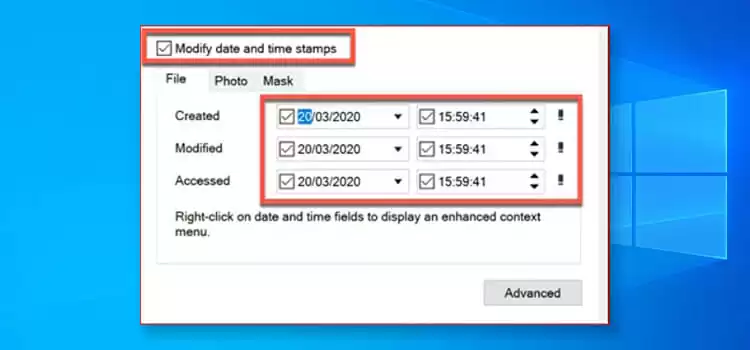Staying Safe in the Age of Texting | How to Identify and Prevent Text Message Scams
Text messaging serves as a convenient, real-time communication channel connecting people instantly. However, an exponential rise in text scams threatens user security and privacy. Devious schemes leverage the anonymity and reach of texts defrauding victims. By understanding common techniques fraudsters deploy plus deploying savvy countermeasures protecting accounts, everyone can converse safely, blocking infiltration attempts through knowledgeable vigilance.

Common Text Message Scam Techniques
While specifics vary, most text cons utilize similar sneaky ploys psychologically manipulating increased openings. Detection starts by recognizing underlying methodologies.
Urgency and Fear
Messages often pressure urgent actions seeking personal information or payments by instilling worry about missing opportunities or experiencing consequences like deactivated accounts. High emotions overwhelm rational judgment.
Charity Scams
Sympathy pleas falsify associations with charities, stealing donations from trusting good samaritans. Always verify legitimacy before generosity gifts; otherwise, line undeserved pockets through misrepresentation.
Spoofed Numbers
Special apps create fake sender IDs, fabricating authenticity, appearing as banks, companies, or contacts tricking response trust. But replies landing to unrelated parties enable access theft or billing scam links posing as security reconciliations.
Phishing Links
Texts containing dangerous links often camouflage malware downloads secretly installed once clicked, capturing everything from passwords, contacts, and private messages afterwards, enabling identity theft. Avoid blind clicking from credulity.
Impersonation Scams
When fraudsters impersonate roles like IT support, customer service reps, or even acquaintances already stored in recipient address books, messaging interactions feel believable enough to satisfy guard drop followed by manipulative tactics conniving access. Verify senders calling unrecognized contacts directly before engaging conversationally.
Prize and Lottery Scams
Everyone loves free rewards, but unsolicited texts notifying lottery wins require upfront “processing fees,” bleeding money from unsuspecting victims eager to claim fictional prizes. Remember, unentered drawings equal no wins despite convincing branding in messages.
Overdue Payment Scams
Fraudsters reference real account numbers, sending fake pending termination over “past due” power, streaming media, or library payment notices seeking account replenishments. Hurried victims pay villains instead of legitimate providers, who lose bucks and still undergo actual service suspensions by real companies that are unpaid.
Smishing
Blending SMS and phishing, this increasingly popular tactic sends alarming texts coercing users to click embedded malicious links, sabotaging devices, downloading keyloggers, spyware, and viruses, and enabling data exploitation mentioned earlier. Approach links cautiously.
Personation Scams
Contacts stored in phones get weaponized once thieves steal devices. Believable messages seeming from already known friends or family plead quick monetary assistance appearing in desperate straits. Sad stories say cars broke down, needing fast repairs or short-term loans. Verify improbable narratives directly via alternate contacts before permitting payments protecting people from peril.
While technically complex in deployments, text scams psychologically function, manipulating increased openings by repeatedly instilling urgency, familiarity, and curiosity as recurring hooks harvesting vulnerabilities.
Red Flags: Warning Signs of a Deceptive Text Message
Beyond understanding standard techniques deployed, when you recognize fake text messages it aids in catching scams faster, protecting users through attentive skepticism-stopping schemes.
Generic Greetings
Obvious dead giveaways lack personalized salutations like “Dear customer” or “Hello friend,” signaling mass disseminated scam broadcasts illegally acquiring batches of numbers blasting frauds systemically seeking scale over specificity indicative authenticity.
Poor Grammar and Spelling
Beyond convention errors excused innocently, atrocious sentence structures fully lacking coherence convey foreign fraudsters utilizing translator tools and wording appeals. These pathetic linguistic attempts stand out clearly against legitimate corporate correspondence held accountable for maintaining higher standards.
Unrealistic Offers
Suppose unbelievable chances seem too good to be true between lottery payouts. In that case, prize wins from unentered contests or limited-time bonuses requiring fast redemption, skepticism warrants guarding wallets against willingness to believe wishful windfalls. Scams tempt tangible actions more than tangible truths, earning trust through headline hype alone. Look closer manually before biting hooks.
Pressure to Act Quickly
Artificial immediacy overwhelmingly demonstrates scam rush tactics, which deny victims opportunities to verify legitimacy or seek counsel before reckless reactivity. Whenever ultimatums command prompt responses or consequences threaten, cautious evaluations best inform the next moves, not knee-jerk urges to rapidly resolve uncertainties. Slow down objectively first.
Requests for Personal Information
Unsolicited appeals seeking social security digits, account details, or passwords signal confidentiality breaches unfolding. No practiced companies text sensitivities freely without consent first formally provided through verified channels. Data security begins with recipients refusing transparency to anyone unqualified for knowing protected details.
Suspicious Links
Hideous hackers harness text links, launching attacks known as smishing. Since previewing underlying routing remains impossible to determine end destinations, never click links sent spontaneously by senders’ unconfirmed officials to avoid potential malicious installations. Deleting these texts instantly prevents possibilities and protects yourself.
Trusting intuition creates initial doubts. But confirming cons relies on unmasking suspicious signs objectively, starting with more subtle generalities and eventually accumulating obvious guilt beyond a reasonable doubt.
Strategies to Prevent Text Message Scams
Once aware of deceptive red flags warning crooked conversations, likely scamming, deploying preventative measures protects phones and finances and stops further infiltration attempts through savvy safeguarding.
Verification is Key
Before responding to texts originating from unknown senders, independently look for origins via published numbers matching company websites or directly dial contacts through previously known channels, ensuring authenticity and confidently avoiding impersonators. Failing verification fails safely smartly, avoiding further engagement questioning contents received.
Do Not Share Personal Information
No matter the fearful scenarios scammers spin seemingly necessitating account data, withholding sharing protects identities completely since no legitimate companies seek private details unsolicited randomly, requiring release reactively. Limit losses and deny breaches wholly.
Beware of Phishing Links
If doubted dialects or details seem digitally dangerous, delete them immediately, halting the harm. Never click embedded links from unverified origins, opening doors to malicious software installations mentioned earlier, hijacking contacts, messages, or worse. Smishing protection means links always warrant skepticism first.
Do Not Respond
Once identified as fraudulent, cut contact entirely, avoiding follow-up failure. Any responses signal active accounts informing future targeted attacks. Silence not only protects pragmatically but also denies deception and power provocation emotionally. Cease completely consciously choice counteracting cons.
Conclusion
As text messaging rapidly became the dominant mobile communication standard thanks to incredible convenience and accessibility unlocking real-time conversations globally, an exponential rise in text scams now threatens user security and privacy. By understanding common social engineering techniques fraudsters psychologically deploy, instilling urgency, plus learning to recognize poor grammar, unrealistic offers, and suspicious links indicating deception, everyone can sharpen scam spotting skills, stopping threats faster. Once identified, promptly halt engagements by providing zero information while reporting spam to carriers and quarantining risky senders for future protection.
Subscribe to our newsletter
& plug into
the world of technology





